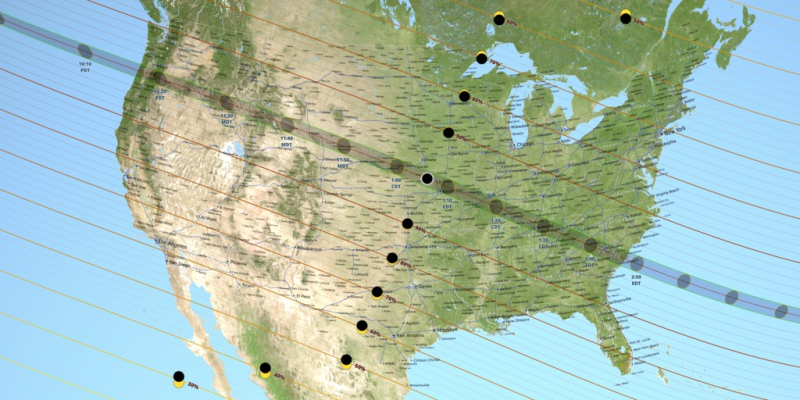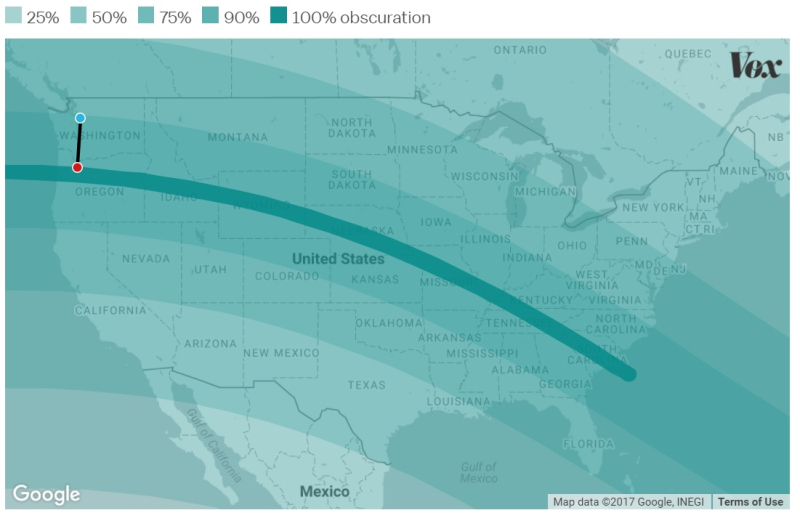
My first time really hearing about a solar eclipse was while reading A Connecticut Yankee in King Arthur's Court with my third grade class. The solar eclipse is a fairly big plot point in the story, so we spent a day or so going over what happens during a solar eclipse.
My teacher had experienced the last time the Pacific Northwest had a total solar eclipse, back on Feb. 26, 1979. No one in the class other than him was alive during the eclipse and I remember we all had a ton of questions for him. Hearing him talk about seeing the sky darken like that seemed like a life changing experience. Ever since then, I've wanted to see one for myself, and I'm super excited that the August 21 solar eclipse will be partially visible in Seattle. The first in my lifetime, and it just might be a once-in-a-lifetime opportunity.
Want to know what to expect during the total solar eclipse that will cross the United States on August 21? Here's a quick primer:
Total solar eclipses occur when the moon comes between Earth and the sun and the moon casts a shadow on the earth. Even though it may seem rare, solar eclipses actually happen all the time. But, eclipses don't normally happen over the United States. Typically where you can see the eclipse is in remote regions or even the middle of the ocean, which means most people don't get to experience them first-hand.
Aug. 21 will mark the first coast-to-coast eclipse in the U.S. in 99 years and the path of totality {where you will see the sun 100% eclipsed by the moon} will be about 70 miles wide. For us PNW folks, another total solar eclipse won’t come close until 2044, when the path will extend through the eastern half of British Columbia. 
Here in Seattle {166 miles north of the path of totality}, the sun will only be 93% eclipsed on August 21, but it should still be pretty cool to experience. The sky will darken, but we won't see the sun's aura and it won't be as spectacular as a total eclipse. But, we didn't have to pay thousands of dollars a night for lodging, so there is that.
I'm guessing most of you probably won't be seeing a total eclipse either, unless you happen to live in the small 70 mile arc of the eclipse or you have paid a small fortune to visit one of those areas on the day of the eclipse, but that doesn't mean you can't participate. First, check out this page from Vox that lets you put in your zip code and learn how much of the sun you will see eclipsed from where you'll be on August 21.
It will also tell you when you will be able to see the eclipse and what direction and how far you would have to travel to see a total solar eclipse. It's actually pretty cool to play around with and I've had fun entering different zip codes to see how they differ.
Second, you will want to buy a pair of eclipse sunglasses, either locally or on Amazon. I found a display at our local Fred Meyer and only paid a little bit for some paper solar eclipse glasses for each of us. When buying your own just make sure the glasses are ISO certified to allow you to look at the sun.
Keep in mind that you will also need to filter any smartphones, cameras, telescopes, or binoculars you use to view the sun!
